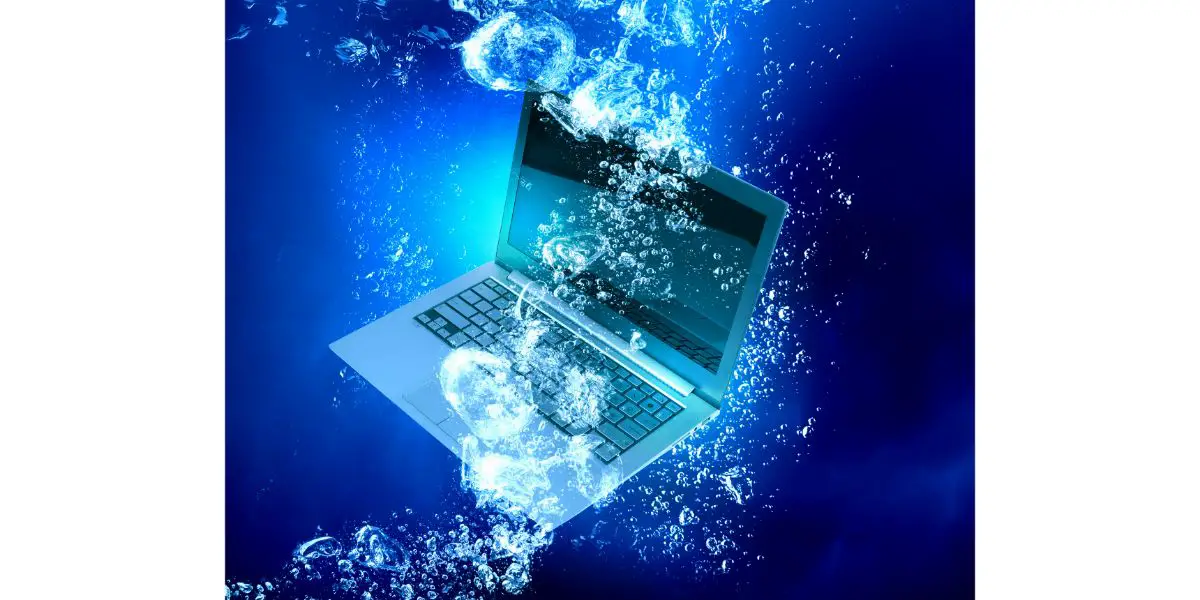Disclaimer: This post may contain affiliate links, meaning we get a small commission if you make a purchase through our links, at no cost to you. For more information, please visit our Disclaimer Page.
It can feel like an oversight on the manufacturer’s parts why we do not yet have waterproof or at least highly water-resistant laptops. However, there are many logical reasons why tech companies are not actively trying to create more waterproof computers.
In this article, we’ll walk you through the different reasons why laptops aren’t waterproof yet and the steps you can take to keep yours safe from rogue liquids.
Table of Contents
Why Aren’t Laptops Waterproof
We have the engineering available today to create waterproof laptops, so why have developers not embraced this design? Ultimately it comes down to four practical reasons:
- The intended uses for laptops
- The cost of production
- The internal components of a computer overheating
- The laptop’s moving parts and connection points
The Intended Uses for Laptops
While a laptop is technically portable, you will unlikely take it into harsher climates.
Unlike smartphones, laptops are usually deliberately set up in places with limited risk of getting super wet. Most of the time, your computer sits at a desk or in your lap, safe inside your home. Your phones go everywhere with you, giving manufacturers a reason to include waterproofing features.
You may use your phone in the rain- but will unlikely use your laptop outside in a downpour.
The Cost of Production
There is simply no market demand for a waterproof laptop. The everyday consumer rarely has a reason for a waterproof computer and would rather spend less on a different model.
Adding waterproofing components to a laptop requires an extra cost that would increase prices. More parts utilized means more workers, time, and manufacturing.
Companies would also lose money if they created a product that could survive a common mishap like water spills. Though frustrating for a consumer, tech companies make money off of their electronics not having longevity.
The costs all outweigh the little demand for waterproofing. Very few people would willingly pay extra for the feature, and tech companies know this fact.
The Vents Required for Cooling
Aside from the cost, waterproofing a laptop can get risky. The process requires sealing the device and trapping hot air inside your computer.
Your laptop internally heats as power surges through it, so it has vents. The more powerful a computer, the more it heats up.
Waterproofing a laptop would mean sealing off those vents, trapping heat inside your computer, and damaging its internal components.
Overheating is a serious problem that many laptops already face. Introducing a waterproofing element would increase the issue further.
A Laptop’s Moving Parts and Connection Ports
Many smartphones these days are strongly water-resistant. But consider their design for a moment. Most smartphones are simple, rectangular shapes with no moving parts. Laptops, however, have hinges for the screen to flip open and keys that press in while you type.
Hinged screens and key switches are hard to waterproof because they require tiny gaps to create movement.
Laptops also often have multiple jacks and ports. HDMI, ethernet, headphone jacks, etc., all allow you connection points. These connection points are highly exposed and susceptible to water damage.
Waterproofing a laptop would complicate access to these ports. If companies include waterproof features, consumers would need to purchase other new devices to collaborate with their laptops.
Headphones would require new connections or be strictly Bluetooth-capable. Increased Bluetooth usage would result in more power consumption on the computer, thus heating the internal components further.
USB-C ports, however, are more waterproof than others. Despite this, it is still not recommended to risk large water spillages around USB-C ports.
What are Rugged Laptops?
While they are uncommon, there are waterproof laptops. However, they are not great when it comes to internal heat issues. These laptops, known as rugged laptops or computers, are bulky like bricks. Rugged laptops are useful for people in industries like construction, mining, and other fieldwork.
Rugged laptops can survive difficult environments. They are more durable and withstand water much better than regular laptop computers.
These computers are a significant investment. Their market is small, giving them a price range from $600 to $5,000. Aside from a large price tag, these laptops also can struggle to maintain a great performance due to heat. They have no holes in their outer cases, meaning no vents or fans circulate air around the internal components.
Most rugged laptops are less powerful than regular ones to compensate for this. The less power they have to pulse, the less heat they will have on the inside.
Most consumers want a sleek laptop that is slim and easy to carry around, which also decreases the market for rugged-style computers.
Are Laptops Water Resistant?
Water resistance is very different from waterproofing. While unable to tolerate submersion, most laptops resist minor spills.
Even rugged laptops are mostly water-resistant rather than waterproof. These laptops can tolerate larger spills better than regular ones but cannot survive full submersion easily.
When you spill water on your laptop, you must act fast to keep it safe.
Ways to Protect Your Laptop from Spills
While your laptop is not waterproof and barely water-resistant, you can invest in some things to help keep your computer safe.
A keyboard cover slips over all the gaps in your keyboard. While it will unlikely save you from major spills, it will protect the liquid from seeping through the keys. They can also be a fun way to personalize your laptop! You will need to purchase one that fits your particular laptop model.
You can also invest in a waterproof laptop case. A case will only protect your laptop from water when safely tucked inside, but it will make a difference if you regularly commute through a rainy area.
You can purchase a soft or hard shell case from many online retailers. You can also opt for a waterproof backpack with a designated laptop pouch.
Conclusion
Ultimately cost and performance issues are why manufacturers do not create many waterproof laptops. There is little market demand for the feature- making consumers more content with standard laptops.


